DINOTERB
Synonym(s):2-tert-Butyl-4,6-dinitrophenol
- CAS NO.:1420-07-1
- Empirical Formula: C10H12N2O5
- Molecular Weight: 240.21
- MDL number: MFCD00031117
- EINECS: 215-813-8
- SAFETY DATA SHEET (SDS)
- Update Date: 2024-12-18 13:37:16
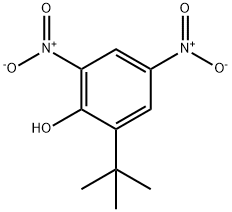
What is DINOTERB?
Description
Dinoterb is a yellow solid. May be formulatedin a hydrocarbon solvent which changes the physical properties shown here. Molecular weight= 240.24; Freezing/Melting point = 126℃. Hazard Identification (based onNFPA-704 M Rating System): Health 3, Flammability 1,Reactivity 2. Practically insoluble in water.
Definition
ChEBI: Dinoterb is a member of phenols and a C-nitro compound.
General Description
Yellow solid. Used as a herbicide and a rodenticide.
Air & Water Reactions
Slightly soluble in water.
Reactivity Profile
Nitrophenolates, such as DINOTERB, range from slight to strong oxidizing agents. If mixed with reducing agents, including hydrides, sulfides and nitrides, they may begin a vigorous reaction that culminates in a detonation. The aromatic nitro compounds may explode in the presence of a base such as sodium hydroxide or potassium hydroxide even in the presence of water or organic solvents. The explosive tendencies of aromatic nitro compounds are increased by the presence of multiple nitro groups. Severe explosion hazard when dry.
Health Hazard
DINOTERB is toxic by all routes of exposure. The dangerous single oral dose of dinitro-o- cresol, a structurally similar compound, is estimated to be about 29 mg/kg.
Fire Hazard
When heated to decomposition DINOTERB emits toxic nitrogen oxide fumes.
Agricultural Uses
Herbicide, Rodenticide: Not approved for use in the U.S. or EU countries There are 17 global suppliers.
Trade name
HERBOGIL®; HERBOGIL® FLUSSIG
Potential Exposure
This material is an herbicide and arodenticide
Shipping
Substituted nitrophenol pesticides, solid, toxic,require a “POISONOUS/TOXIC MATERIALS” label. Theyfall in Hazard Class 6.1 and dinoterb in Packing Group II.
Incompatibilities
Symptoms of poisoning are similarto other dinitrophenols and may include nausea, gastric distress, restlessness, sensation of heat, flushed skin, sweating,thirst, deep and rapid breathing, rapid heart rate, fever, andlack of oxygen to tissues (blueness of skin). This compoundis toxic by all routes of exposure. The dangerous single oraldose of dinitro-o-cresol, a structurally similar compound, isestimated to be about 29 mg/kg.
Properties of DINOTERB
| Melting point: | 128-131℃ |
| Boiling point: | 382.92°C (rough estimate) |
| Density | 1.3518 (rough estimate) |
| refractive index | 1.6620 (estimate) |
| storage temp. | 0-6°C |
| form | neat |
| pka | 5.55±0.44(Predicted) |
| BRN | 1887173 |
| CAS DataBase Reference | 1420-07-1 |
| EPA Substance Registry System | Dinoterb (1420-07-1) |
Safety information for DINOTERB
| Signal word | Danger |
| Pictogram(s) |
 Skull and Crossbones Acute Toxicity GHS06  Health Hazard GHS08  Environment GHS09 |
| GHS Hazard Statements |
H410:Hazardous to the aquatic environment, long-term hazard |
| Precautionary Statement Codes |
P202:Do not handle until all safety precautions have been read and understood. P264:Wash hands thoroughly after handling. P264:Wash skin thouroughly after handling. P273:Avoid release to the environment. P280:Wear protective gloves/protective clothing/eye protection/face protection. P301+P310:IF SWALLOWED: Immediately call a POISON CENTER or doctor/physician. |
Computed Descriptors for DINOTERB
New Products
(S)-3-Aminobutanenitrile hydrochloride 4-Methylphenylacetic acid N-Boc-D-alaninol N-BOC-D/L-ALANINOL Tert-butyl bis(2-chloroethyl)carbamate 3-Morpholino-1-(4-nitrophenyl)-5,6-dihydropyridin- 2(1H)-one Furan-2,5-Dicarboxylic Acid Tropic acid 1-Bromo-3,5-Di-Tert-Butylbenzene S-2-CHLORO PROPIONIC ACID ETHYL ISOCYANOACETATE 2-Bromo-1,3-Bis(Dimethylamino)Trimethinium Hexafluorophosphate 4-IODO BENZOIC ACID 3-NITRO-2-METHYL ANILINE 1-(2,4-DICHLOROPHENYL) ETHANAMINE (2-Hydroxyphenyl)acetonitrile 4-Bromopyrazole 2-(Cyanocyclohexyl)acetic acid 4-methoxy-3,5-dinitropyridine 1-(4-(aminomethyl)benzyl)urea hydrochloride 2-aminopropyl benzoate hydrochloride diethyl 2-(2-((tertbutoxycarbonyl)amino) ethyl)malonate tert-butyl 4- (ureidomethyl)benzylcarbamate Ethyl-2-chloro((4-methoxyphenyl)hydrazono)acetateRelated products of tetrahydrofuran

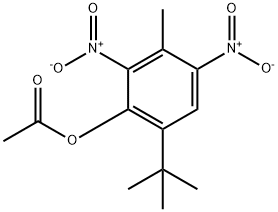
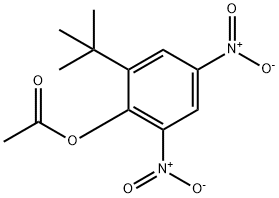
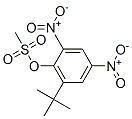

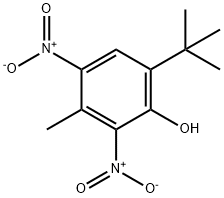
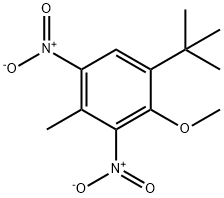
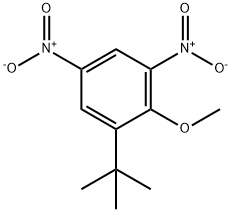
You may like
-
 2-(TERT-BUTYL)-4,6-DINITROPHENOL CAS 1420-07-1View Details
2-(TERT-BUTYL)-4,6-DINITROPHENOL CAS 1420-07-1View Details
1420-07-1 -
 2033-24-1 98%View Details
2033-24-1 98%View Details
2033-24-1 -
 1975-50-4 98%View Details
1975-50-4 98%View Details
1975-50-4 -
 2-HYDROXY BENZYL ALCOHOL 98%View Details
2-HYDROXY BENZYL ALCOHOL 98%View Details
90-01-7 -
 2-Chloro-1,3-Bis(Dimethylamino)Trimethinium Hexafluorophosphate 221615-75-4 98%View Details
2-Chloro-1,3-Bis(Dimethylamino)Trimethinium Hexafluorophosphate 221615-75-4 98%View Details
221615-75-4 -
 61397-56-6 CIS BROMO BENZOATE 98%View Details
61397-56-6 CIS BROMO BENZOATE 98%View Details
61397-56-6 -
 14714-50-2 (2-Hydroxyphenyl)acetonitrile 98+View Details
14714-50-2 (2-Hydroxyphenyl)acetonitrile 98+View Details
14714-50-2 -
 118753-70-1 98+View Details
118753-70-1 98+View Details
118753-70-1